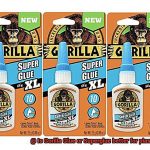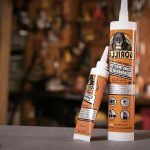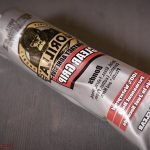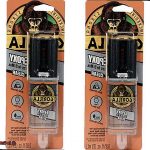Let’s talk about something that’s been sticking in our minds – glue sticks.
We all love using them to make our projects come together like magic. But have you ever wondered if these innocent-looking sticks could actually be harmful?
It’s a valid concern, considering how many household products have turned out to be not-so-safe. So, in this blog post, we’re going to dig deep and uncover the potential health risks of using glue sticks.
Armed with scientific research and expert advice, we want to give you all the facts so you can make smart choices for yourself and your loved ones. Get ready to peel back the layers and find out if glue sticks are as harmless as they seem or if there’s more than meets the eye.
Stick around (pun intended), because we’re about to get sticky with it.
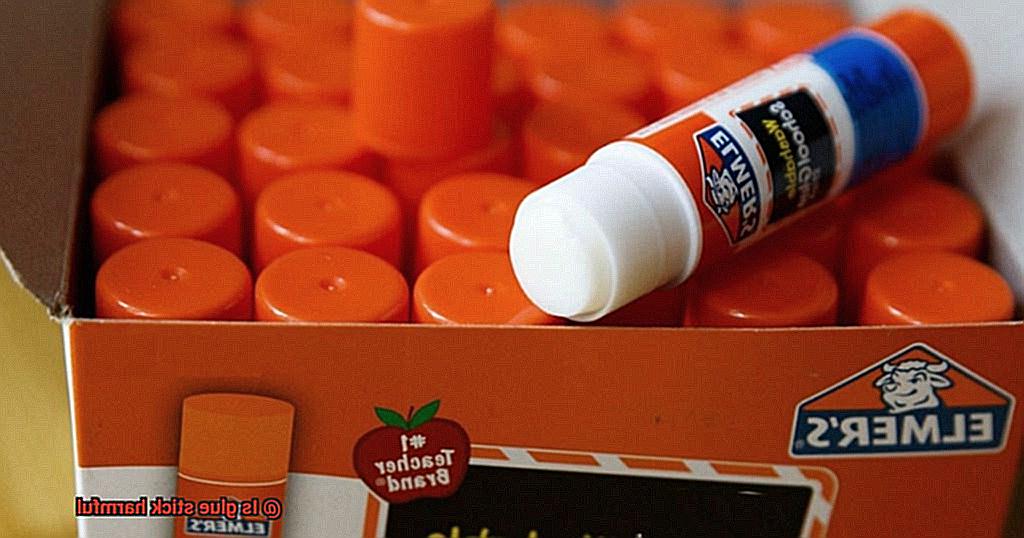
What is Glue Stick?
Contents
In this article, we will delve into the fascinating world of glue sticks, exploring their composition, uses, and safety considerations.
Composition and Properties:
Glue sticks are solid adhesives encased in tubes, making them mess-free and easy to use. The main ingredient in most glue sticks is polyvinyl acetate (PVA), a safe and non-toxic synthetic polymer. This component provides the adhesive properties that allow glue sticks to bond various materials together effectively. Additionally, glue sticks may contain additives like water, plasticizers, and preservatives to enhance their adhesive properties and extend their shelf life.
Versatility in Applications:
Glue sticks are extremely versatile and can be used on a variety of surfaces such as paper, cardboard, fabric, lightweight plastics, and more. They are ideal for crafts, scrapbooking, school projects, and quick household repairs. The ease of application and the ability to spread the adhesive smoothly make glue sticks a popular choice for both adults and children. From attaching photos to creating intricate paper cutouts, glue sticks offer precise control and create strong bonds.
Safety Considerations:
While glue sticks are generally safe for use, it is important to exercise caution and follow proper handling guidelines. Glue sticks should be used under adult supervision, especially with young children. Accidental ingestion of small amounts of glue stick is unlikely to cause harm due to its non-toxic nature. However, excessive exposure or misuse can lead to discomfort or irritation. It is recommended to avoid prolonged skin contact and to wash hands thoroughly after use. Allergic reactions are also possible in some individuals, so it’s important to discontinue use if any symptoms occur and consult a healthcare professional if needed.
Potential Risks of Using Glue Sticks
Glue sticks are a popular choice for adhesion due to their convenient application. However, it’s important to be aware of the potential risks associated with their usage. In this article, we will explore the potential health risks, environmental hazards, and safety concerns surrounding glue sticks. By understanding these risks, you can take the necessary precautions to ensure a safe and enjoyable experience.
Health Risks:
- Glue sticks often contain chemicals like polyvinyl acetate (PVA) and solvents.
- Prolonged exposure to these chemicals can lead to respiratory problems, skin irritations, and eye irritations.
- Ingesting glue sticks can be harmful, especially for young children who may mistake them for food or candy.
- Some glue sticks may even contain toxic substances like formaldehyde or toluene, which can have more severe health effects if exposed to for extended periods.
- To ensure safe use, read labels and follow manufacturer’s instructions.

Environmental Hazards:
- Glue sticks are generally considered safe for the environment as they are water-based and do not contain harmful volatile organic compounds (VOCs).
- Proper disposal of used glue sticks is important to avoid contributing to pollution. Check with local recycling facilities for proper methods.
Safety Concerns:
- Ventilation is crucial when using glue sticks as some solvents can emit fumes that may cause dizziness, headaches, and nausea if inhaled in large quantities or in poorly ventilated areas.
- Work in well-ventilated spaces or use protective equipment like masks if necessary.
- Proper storage of glue sticks is important to prevent accidental ingestion or exposure. Keep them out of reach of children and away from food or beverages.
How to Use Glue Sticks Safely
Glue sticks are the perfect companion for your arts and crafts projects, but it’s crucial to prioritize safety. Let’s delve into some tips that will ensure you have a safe and enjoyable time with glue sticks.
Read the Labels:
Before diving into your crafting extravaganza, take a moment to peruse the instructions and warning labels on the packaging. Think of it as uncovering a secret recipe for success. Understanding how to use the glue stick properly will keep you out of sticky situations.
Goodbye Fumes:
Just like your mom’s cooking, glue sticks can release fumes. To ensure your safety, always work in a well-ventilated area. Throw open those windows or ask an adult to switch on a fan. Fresh air is the superhero that keeps those fumes at bay.
Protect Your Skin:
Glue sticks are fantastic for sticking things together, but they’re not so friendly when it comes to your skin. Some glue sticks contain chemicals that can cause irritation or allergies. To be a skin superhero, consider wearing gloves or applying a barrier cream before handling the glue stick. Your skin will thank you for this protective shield.
Keep Them Away from Little Paws:
Glue sticks may resemble delectable treats to curious pets or younger siblings, but they’re definitely not meant for snacking. Keep your glue sticks out of reach from both furry friends and tiny hands. We want everyone to be safe and avoid any tummy troubles.
Store Them Like a Pro:
After you’ve completed your crafting masterpiece, make sure to tightly close your glue stick. This prevents it from drying out and extends its lifespan. Store your glue sticks in a cool and dry place, away from sunlight and heat sources. Now they’ll be primed and ready for your next creative adventure.
Allergenicity of Glue Sticks
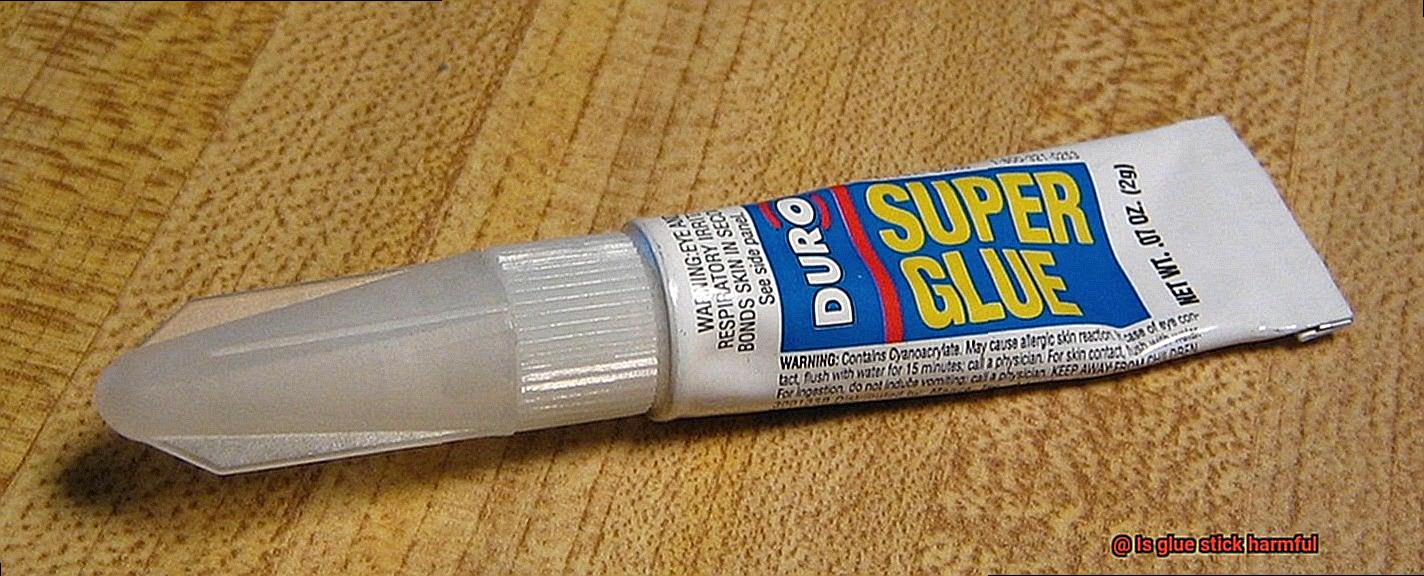
If so, you’ve likely encountered the versatile and convenient glue stick during your creative endeavors. These compact wonders have become a staple in arts and crafts, providing a mess-free way to bond materials. However, it’s crucial to be aware that glue sticks can occasionally trigger allergic reactions. In this article, we will delve into the world of glue stick allergenicity, arming you with knowledge on how to stay safe while using them.
Understanding the Allergenicity of Glue Sticks:
- Adhesive Allergens: The adhesive component of glue sticks often takes the blame for allergic reactions. Chemicals like polyvinyl acetate (PVA) can irritate the skin and cause allergic contact dermatitis in susceptible individuals. So when choosing a glue stick, keep an eye out for ingredients that may provoke a reaction.
- Hidden Culprits: It’s essential to note that glue sticks may contain preservatives and fragrances that can also instigate allergic responses. Formaldehyde releasers and methylisothiazolinone are notorious for sensitizing skin and causing contact dermatitis. If you have a history of allergies or sensitive skin, be vigilant about these ingredients.
Precautions for Individuals with Allergies or Sensitivities:
- Read Labels: Before purchasing a glue stick, take the time to carefully read product labels. Look for those that are labeled as hypoallergenic or free from common allergens. This simple step can significantly reduce the risk of allergic reactions.
- Perform a Patch Test: If you have known allergies or sensitive skin, it’s wise to conduct a patch test before using a new glue stick. Apply a small amount to a small area of your skin and wait for 24 to 48 hours to check for any adverse reactions. This precautionary measure can save you from a potentially uncomfortable experience.
- Discontinue Use and Seek Medical Attention: Should you develop an allergic reaction to a glue stick, cease using it immediately and cleanse the affected area thoroughly with soap and water. If the symptoms persist or worsen, it’s crucial to seek medical attention promptly.
Proper Handling and Storage Guidelines for Glue Sticks
Glue sticks are more than just a crafter’s best friend – they’re the secret weapon that unleashes creativity and brings projects to life. But like any tool, they require proper care to ensure their effectiveness and longevity. In this guide, we’ll dive into the essential guidelines for handling and storing glue sticks, so you can keep your creative juices flowing without any sticky situations.
Cool, Dry, and Perfectly Preserved:
To keep your glue sticks in tip-top shape, store them in a cool and dry place. Heat and moisture are the arch-nemeses of glue sticks, causing them to soften or melt into a sticky mess. Find a temperature-controlled spot away from direct sunlight to preserve their adhesive magic.
Out of Reach, Out of Trouble:
Glue sticks may look tempting to little hands (and paws), but they’re not meant for playtime. Keep these wonders of stickiness out of reach of children and pets by storing them in a locked cabinet or on a high shelf. Safety first, always.
Breathe Easy:
When using glue sticks, make sure you’re working in a well-ventilated area. Glue stick fumes can be a little overwhelming if inhaled excessively, causing mild respiratory irritation. Open windows or set up fans to keep the air circulating and those fumes at bay.
Handle With Care:
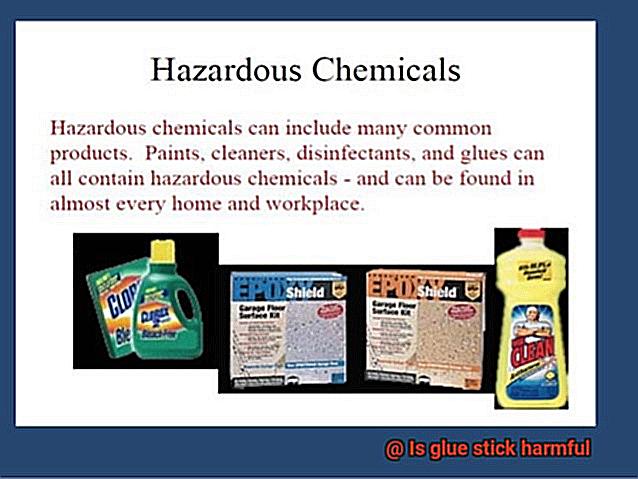
While glue sticks are generally non-toxic, prolonged contact with eyes or skin can cause minor irritation. If you accidentally get some glue on your skin or in your eyes, wash the affected area immediately with water. If any irritation persists or worsens, don’t hesitate to seek medical advice.
Glue Sticks Are Not Snacks:
Let’s state the obvious – glue sticks are not edible. Ingesting glue stick material can lead to stomach upset and other gastrointestinal issues. If someone accidentally ingests glue stick material, don’t take any chances – seek immediate medical attention. It’s always better to be safe than sorry.
Cap It, Snap It, Keep It Fresh:
To prevent your glue sticks from drying out or hardening, always close the cap tightly after each use. Leaving the cap open exposes the adhesive to air, reducing its effectiveness over time. Seal it up tight and keep those glue sticks ready for action.
Benefits of Using Glue Sticks
Here are the key advantages of using glue sticks:
- User-Friendly: Glue sticks are incredibly easy to use. Unlike messy and hard-to-control liquid glues, glue sticks come in a solid stick form that makes application a breeze. No more worrying about sticky fingers or accidental spills.
- Quick Drying: Time is precious when it comes to crafting or completing school assignments. Fortunately, glue sticks dry within seconds or minutes, allowing you to proceed with your project without waiting for the glue to set. Say goodbye to long drying times and hello to productivity.
- Versatility: Whether you’re working with paper, cardboard, fabric, or lightweight wood, glue sticks have got you covered. Their ability to adhere to various materials makes them suitable for a wide range of projects, from arts and crafts to office tasks.
- Child-Safe: Parents can rest easy knowing that glue sticks are non-toxic and safe for their little ones to use. Unlike some liquid glues that may contain harmful chemicals or strong odors, glue sticks are generally made from non-toxic ingredients, making them worry-free for kids.
- Washable: Accidents happen, especially when crafting with children. Fortunately, many glue sticks are washable, allowing any excess glue to be easily removed from surfaces or fabrics with water. No need to stress over sticky mishaps.
- Precise Application: The solid stick form of glue sticks enables controlled and targeted application. Say goodbye to messy spills and hello to precise bonding.
- Portability: Glue sticks are the perfect on-the-go adhesive solution. You can easily carry them in your pencil case, purse, or backpack, making them ideal for students, travelers, or anyone who needs a reliable adhesive while on the move. Never be caught without a glue stick again.
- Long Shelf Life: Unlike some glues that dry out quickly, glue sticks have a long shelf life when properly sealed. This means you can store them for extended periods without worrying about losing their adhesive properties. A cost-effective choice for occasional users.
- Eco-Friendly: Many glue sticks are made from renewable resources such as plant-based materials, making them a more sustainable option compared to other glues that may contain petroleum-based ingredients. Craft with peace of mind, knowing that you’re minimizing your environmental impact.
Alternatives to Glue Sticks
I’ve done some extensive research, and I’ve got some exciting options to share with you.
Let’s start with liquid glue – a game-changer in the world of adhesives. This stuff comes in bottles with applicator tips, making it easy to control and apply. Its strong bond between surfaces ensures that your masterpiece won’t fall apart. Liquid glue is a must-have for any craft enthusiast.
Next up, we have the innovative glue dots or adhesive dots. These little gems are pre-cut dots of adhesive that adhere easily to paper, fabric, or any other material your creative heart desires. They’re neat, convenient, and eliminate the need for messy glue. With glue dots, you can say goodbye to messy hands and hello to hassle-free crafting.
If you’re a fan of tapes, then tape runners or adhesive tape dispensers are perfect for you. These nifty devices dispense a strip of adhesive tape that can be applied smoothly and evenly. No mess, no fuss – just a clean and precise application every time.
Now, let’s talk about the quick-drying wonder – hot glue guns. But beware. These bad boys require adult supervision due to their high temperatures. However, they provide a strong bond and dry super fast, making them ideal for those urgent projects.
If invisible adhesion is what you seek, then double-sided tape is your new best friend. It’s perfect for scrapbooking, gift wrapping, and other crafts where visible adhesive would ruin the aesthetic of your masterpiece.
But wait. There’s more. For temporary bonding needs, check out repositionable adhesive sprays or glue sticks. These options allow you to reposition or remove items without leaving any residue behind. Perfect for those indecisive moments when you just can’t commit.
And let’s not forget about our eco-friendly friends out there. Natural alternatives like flour paste, rice paste, or vegetable glues made from cornstarch or potato starch are non-toxic and environmentally friendly. With these options, you can stick things together guilt-free.
Also Read: Is Hot Glue Toxic? – Glue Things
Conclusion
In conclusion, glue sticks are a safe and beneficial choice for craft enthusiasts of all ages. The primary ingredient in most glue sticks, polyvinyl acetate (PVA), is a non-toxic synthetic polymer that offers strong adhesion without any major health risks. With their versatility and ease of use, glue sticks provide precise application, making them perfect for a wide range of projects.
While glue sticks are generally safe, it’s crucial to handle them with care and caution. It’s recommended to have adult supervision when young children are using glue sticks. To prevent any potential irritation or discomfort, avoid prolonged skin contact and thoroughly wash your hands after use.
It’s important to note that some glue sticks may contain additives such as preservatives and fragrances that can trigger allergic reactions in certain individuals. Take the time to read labels carefully and consider conducting a patch test before using a new glue stick if you have known allergies or sensitive skin.
Proper handling and storage play a vital role in maintaining the effectiveness and longevity of your glue sticks. Keep them in a cool, dry place away from direct sunlight to prevent drying out or melting. Additionally, make sure to store them out of reach of children and pets to avoid accidental ingestion or exposure.
Overall, when used correctly and with proper precautions, glue sticks pose minimal harm to users’ health or the environment while offering countless opportunities for creative expression.


